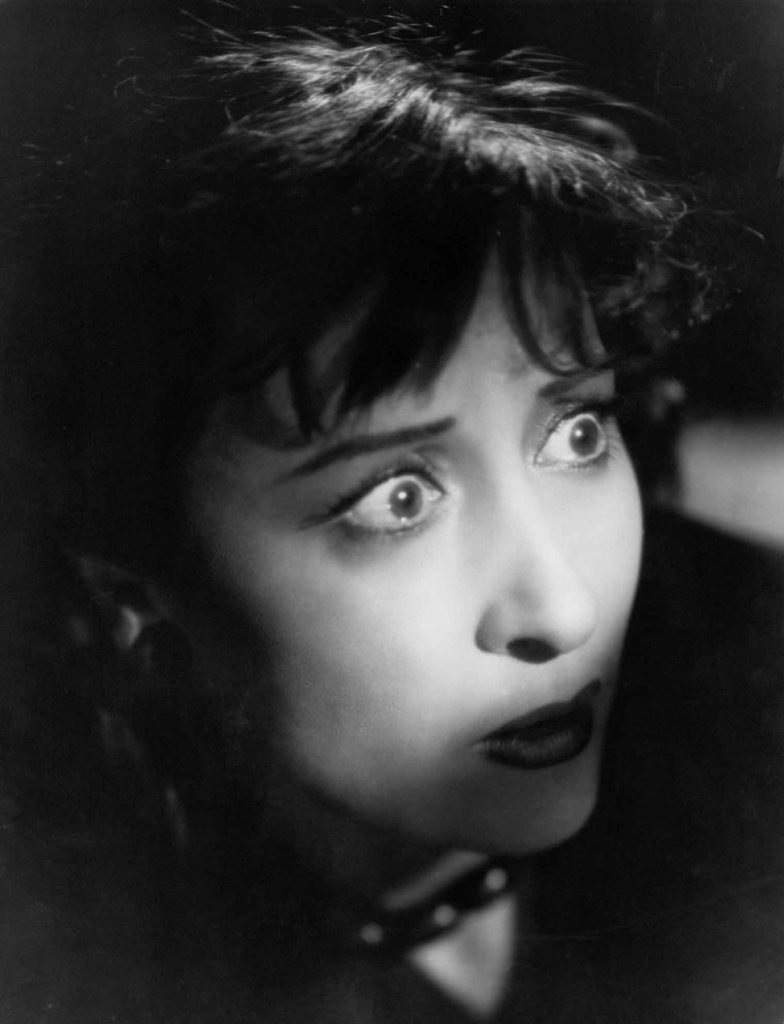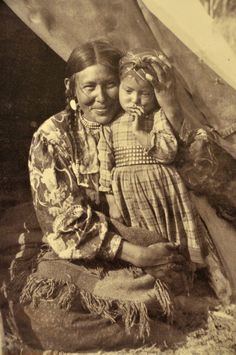
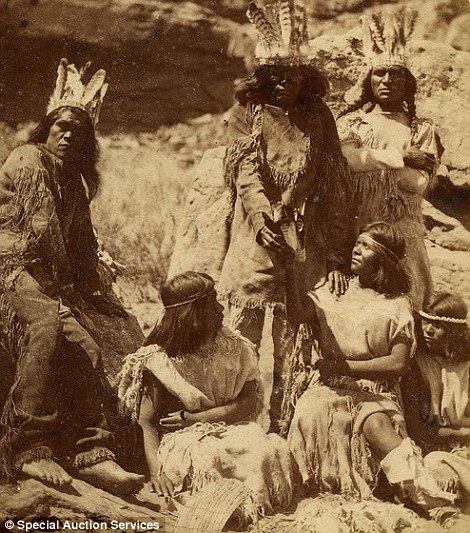 1) NATIVE AMERICA: FIRST PEOPLE, ANCIENT CIVILIZATIONS, ENDURING CULTURES does indeed explore “some of the most advanced cultures in human history and the Native American people who created them.” It does indeed feature “sacred rituals filmed for the first time, history-changing scientific discoveries, and rarely heard voices from the living legacy of Native American culture.” It does indeed, through breathtaking and haunting visuals, give many insights into “peoples who are deeply connected to earth, sky, water, and all living things.” In all, this four-part series is a profoundly moving, heartbreaking (think systematic and cruel Christian genocide of Native Americans), firmly spiritual and heart-opening experience of ways of life rooted in both the earth and the universe. I remember a trip of many years ago to New Mexico’s Chaco Canyon that moved me deeply, and this unforgettable series reconnects me to that life-altering experience.
1) NATIVE AMERICA: FIRST PEOPLE, ANCIENT CIVILIZATIONS, ENDURING CULTURES does indeed explore “some of the most advanced cultures in human history and the Native American people who created them.” It does indeed feature “sacred rituals filmed for the first time, history-changing scientific discoveries, and rarely heard voices from the living legacy of Native American culture.” It does indeed, through breathtaking and haunting visuals, give many insights into “peoples who are deeply connected to earth, sky, water, and all living things.” In all, this four-part series is a profoundly moving, heartbreaking (think systematic and cruel Christian genocide of Native Americans), firmly spiritual and heart-opening experience of ways of life rooted in both the earth and the universe. I remember a trip of many years ago to New Mexico’s Chaco Canyon that moved me deeply, and this unforgettable series reconnects me to that life-altering experience.
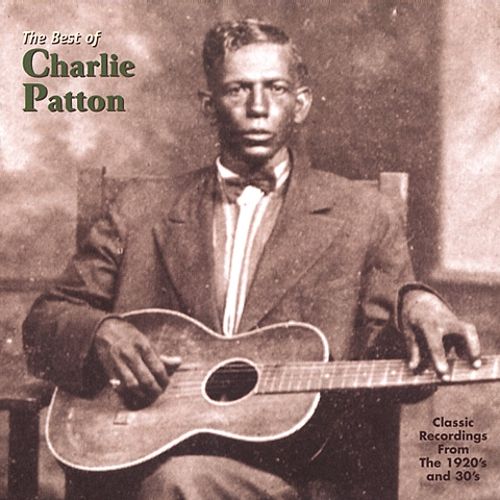 2) RUMBLE: THE INDIANS WHO ROCKED THE WORLD is another eye, ear and heart opener that explores “the profound and overlooked influence of Indigenous people on popular American music.” We begin with Link Wray whose instrumental “Rumble” haunted our CHUM charts and airwaves in the fifties with an almost otherworldly effect. “Can our guitars do that?” we used to ask. And what about Charley Patton, an influence acknowledged by many other blues greats like Howlin’ Wolf, whose blues are as much native chanting as 12-bar format. Ask Tony Bennett about native rooted and influenced Mildred Bailey who gave us the goods on reshaping a melodic line in jazz. Yes, Jimi Hendrix, Robbie Robertson, and Jesse Ed Davis, all known for distinctive rock rhythms and riffs have personal and musical roots in Native music. I remember the first time I met Buffy Sainte-Marie at Hamilton’s Happy Medium Coffee House where she sang me a new song by a then unknown Bob Dylan and then on stage performed in a vibrato-ish chanted style that has since then been one of the distinctive voices in folk music.
2) RUMBLE: THE INDIANS WHO ROCKED THE WORLD is another eye, ear and heart opener that explores “the profound and overlooked influence of Indigenous people on popular American music.” We begin with Link Wray whose instrumental “Rumble” haunted our CHUM charts and airwaves in the fifties with an almost otherworldly effect. “Can our guitars do that?” we used to ask. And what about Charley Patton, an influence acknowledged by many other blues greats like Howlin’ Wolf, whose blues are as much native chanting as 12-bar format. Ask Tony Bennett about native rooted and influenced Mildred Bailey who gave us the goods on reshaping a melodic line in jazz. Yes, Jimi Hendrix, Robbie Robertson, and Jesse Ed Davis, all known for distinctive rock rhythms and riffs have personal and musical roots in Native music. I remember the first time I met Buffy Sainte-Marie at Hamilton’s Happy Medium Coffee House where she sang me a new song by a then unknown Bob Dylan and then on stage performed in a vibrato-ish chanted style that has since then been one of the distinctive voices in folk music.
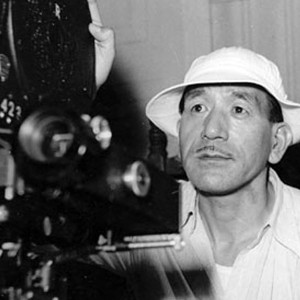
 3) I’ve viewed Mark Cousins’ fifteen episode THE STORY OF FILM: AN ODYSSEY maybe five times over these past years, for several reasons. Cousins, a director-producer-critic, speaks with a gentle yet passionate authoritative voice that compels the viewer to submit willingly to his selective insights and to savour all that touches him, as a film-maker and a lover of film, as he covers an enormous chronological and geographic span in his look at our world’s cinema. Surprises abound too. I once interviewed the influential Algerian novelist, translator, filmmaker, and frequent Nobel Prize contender Assia Djebar, and, though her feminist staunchly anti-patriarchy books were available, I never imagined that I would see anything of her film-making – but Cousins here includes a sequence. If one episode is titled The 1930s: The Great American Movie Genres and the Brilliance of European Film, another is titled 1953-1967 The Swollen Story: World Cinema Bursting at the Seams, and each has intriguing examples, some expected and some unknown. A splendid education in, and experience of, film. And I even got to visit the grave of director Yasujiro Ozu, with the sole marking on it, in Japanese, meaning Nothingness. But then, Ozu always saw universal dimensions in his depictions of daily Japanese life.
3) I’ve viewed Mark Cousins’ fifteen episode THE STORY OF FILM: AN ODYSSEY maybe five times over these past years, for several reasons. Cousins, a director-producer-critic, speaks with a gentle yet passionate authoritative voice that compels the viewer to submit willingly to his selective insights and to savour all that touches him, as a film-maker and a lover of film, as he covers an enormous chronological and geographic span in his look at our world’s cinema. Surprises abound too. I once interviewed the influential Algerian novelist, translator, filmmaker, and frequent Nobel Prize contender Assia Djebar, and, though her feminist staunchly anti-patriarchy books were available, I never imagined that I would see anything of her film-making – but Cousins here includes a sequence. If one episode is titled The 1930s: The Great American Movie Genres and the Brilliance of European Film, another is titled 1953-1967 The Swollen Story: World Cinema Bursting at the Seams, and each has intriguing examples, some expected and some unknown. A splendid education in, and experience of, film. And I even got to visit the grave of director Yasujiro Ozu, with the sole marking on it, in Japanese, meaning Nothingness. But then, Ozu always saw universal dimensions in his depictions of daily Japanese life.
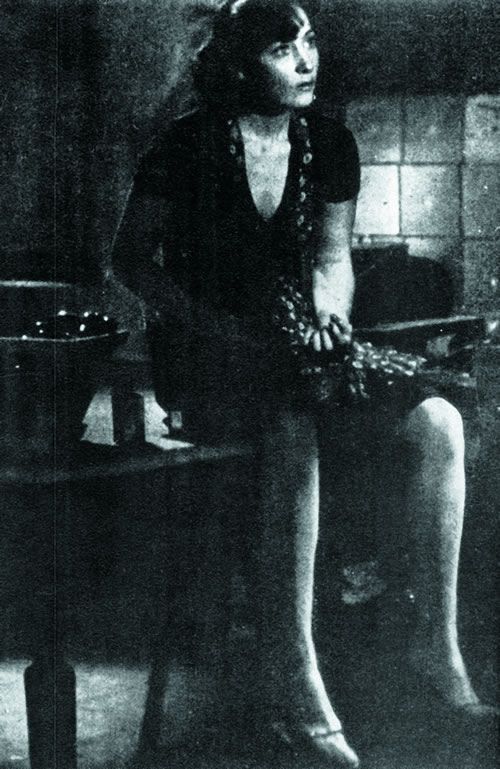 4) Many years ago, in recorded time, I used to watch a series on TV titled Il Mio Viaggio in Italia which, unfortunately lacked subtitles to help one follow the dialogue of many examples of often Italian neorealism films. Fortunately, the film-maker and host was Martin Scorcese who used to see such films as a child on TV in New York and who developed a palpable passion one could feel while listening to his narrations and discussions. The DVD version, now with subtitles, is titled MY VOYAGE TO ITALY: A LOOK AT THE MOVIES THAT INFLUENCED A FILMMAKER’S PASSION We begin with Visconti and Rossellini and, because Scorcese like Mark Cousins has both a film-maker’s sensibility and eye, each director considered becomes something of a new experience for us. I own a number of these films and want to see them again, but now in new light, although Scorcese’s examples might be lengthy enough for some. We do move on to Antonioni (I’m coming, Monica Vitti) and Fellini. Scorsese gives useful background to the directors and evaluates the many films on aesthetic, political, personal, and sociological grounds. The actual footage incorporated into the films -say, Nazi soldiers in Open City or the actual execution of collaborators with the Nazis – are brief but very disturbing.
4) Many years ago, in recorded time, I used to watch a series on TV titled Il Mio Viaggio in Italia which, unfortunately lacked subtitles to help one follow the dialogue of many examples of often Italian neorealism films. Fortunately, the film-maker and host was Martin Scorcese who used to see such films as a child on TV in New York and who developed a palpable passion one could feel while listening to his narrations and discussions. The DVD version, now with subtitles, is titled MY VOYAGE TO ITALY: A LOOK AT THE MOVIES THAT INFLUENCED A FILMMAKER’S PASSION We begin with Visconti and Rossellini and, because Scorcese like Mark Cousins has both a film-maker’s sensibility and eye, each director considered becomes something of a new experience for us. I own a number of these films and want to see them again, but now in new light, although Scorcese’s examples might be lengthy enough for some. We do move on to Antonioni (I’m coming, Monica Vitti) and Fellini. Scorsese gives useful background to the directors and evaluates the many films on aesthetic, political, personal, and sociological grounds. The actual footage incorporated into the films -say, Nazi soldiers in Open City or the actual execution of collaborators with the Nazis – are brief but very disturbing.
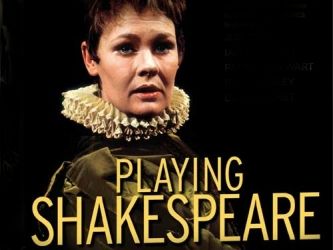
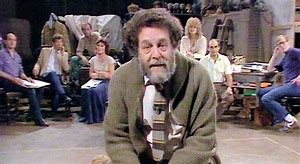 5) I was once fortunate enough to interview theatre director and scholar John Barton at his roomy flat in London and, because the man’s curiosity for truth and accuracy were unending, our meeting scheduled for one hour became three. John would pull book after book down to determine the etymological routes of a word in question and I was thrilled to briefly piggyback his enthusiasm. Such is the same experience in watching his PLAYING SHAKESPEARE, a nine-episode series of master-classes from 1984 which allow the viewer to explore Shakespeare’s lines for hidden clues to character motivation, watch actors trying to balance intellect and passion, and hear famous scenes afresh through the subtlest of shadings spoken in even one sentence. On this occasion, one’s master-classmates include Judi Dench, Ben Kingsley, Peggy Ashcroft, Ian McKellen, Patrick Stewart, David Suchet, Alan Howard, and a number of inspiring others. And yes, I have watched this series a number of times and, on each occasion, felt myself privileged to share the explorations and performances of some of the world’s most accomplished actors
5) I was once fortunate enough to interview theatre director and scholar John Barton at his roomy flat in London and, because the man’s curiosity for truth and accuracy were unending, our meeting scheduled for one hour became three. John would pull book after book down to determine the etymological routes of a word in question and I was thrilled to briefly piggyback his enthusiasm. Such is the same experience in watching his PLAYING SHAKESPEARE, a nine-episode series of master-classes from 1984 which allow the viewer to explore Shakespeare’s lines for hidden clues to character motivation, watch actors trying to balance intellect and passion, and hear famous scenes afresh through the subtlest of shadings spoken in even one sentence. On this occasion, one’s master-classmates include Judi Dench, Ben Kingsley, Peggy Ashcroft, Ian McKellen, Patrick Stewart, David Suchet, Alan Howard, and a number of inspiring others. And yes, I have watched this series a number of times and, on each occasion, felt myself privileged to share the explorations and performances of some of the world’s most accomplished actors
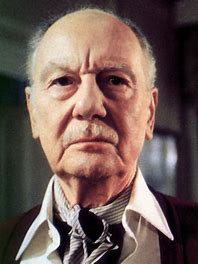
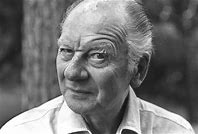 6) SIX CENTURIES OF VERSE: POETRY’S GREATEST HITS BROUGHT TO LIFE, also from 1984, is another excellent series whose repeated viewings guarantee new insights and pleasures each time. Hosted by John Gielgud, who on occasion also does a poem for himself, the company of readers includes Anthony Hopkins, Ralph Richardson, Lee Remick, Peggy Ashcroft, Stacy Keach, Ian Richardson, and Julian Glover. It is interesting to note in which poetry a specific reader excels in recitation and where (but not often) they do not, so to speak, blend with the verse, as you might expect of an actor. The sixteen episodes begin Old English and Beowulf, proceed through Chaucer, then the medievals and Elizabethans right up to, on Episode 15, Yeats, Owen, Frost, Eliot, Auden and on Episode 16 Thomas, Lowell, Larkin, and Hughes. It’s also a pleasure to reconnect here and there with a poem that resonated with one’s younger years and how the same poem rings true in newer, perhaps, deeper ways when one is not as young. One personal favorite is Cyril Cusack reading – and living, it seems – the words of Yeats.
6) SIX CENTURIES OF VERSE: POETRY’S GREATEST HITS BROUGHT TO LIFE, also from 1984, is another excellent series whose repeated viewings guarantee new insights and pleasures each time. Hosted by John Gielgud, who on occasion also does a poem for himself, the company of readers includes Anthony Hopkins, Ralph Richardson, Lee Remick, Peggy Ashcroft, Stacy Keach, Ian Richardson, and Julian Glover. It is interesting to note in which poetry a specific reader excels in recitation and where (but not often) they do not, so to speak, blend with the verse, as you might expect of an actor. The sixteen episodes begin Old English and Beowulf, proceed through Chaucer, then the medievals and Elizabethans right up to, on Episode 15, Yeats, Owen, Frost, Eliot, Auden and on Episode 16 Thomas, Lowell, Larkin, and Hughes. It’s also a pleasure to reconnect here and there with a poem that resonated with one’s younger years and how the same poem rings true in newer, perhaps, deeper ways when one is not as young. One personal favorite is Cyril Cusack reading – and living, it seems – the words of Yeats.
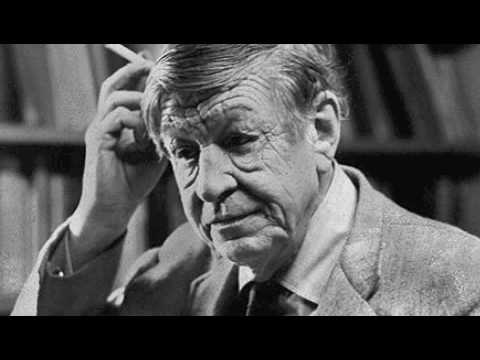
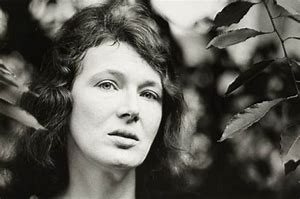
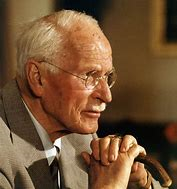 7) IN THEIR OWN WORDS: BBC INTERVIEWS WITH GREAT NOVELISTS AND THINKERS satisfies, in rare films and recordings, an inevitable curiosity of every reader to know what a given author looked and sounded like. This six-part series begins with three programs of novelists, first from 1919 -1939 – E. M. Forster, Virginia Woolf (only audio), P, G. Wodehouse, Aldous Huxley, George Orwell (no audio, though he was at the B.B.C. for two years), Grahame Greene, and Jean Rhys who, being underappreciated disappeared into a small bungalow in Devon for many years. Second, Tolkien, Ian Fleming, John LeCarre, John Wyndham, Anthony Burgess, Doris Lessing, and Margaret Drabble (whose The Radiant Way was once a flight to London reading for me). The third disc includes Ian McEwen, Martin Amis, Angela Carter (whose Wise Children was once a flight back to Toronto reading), and Salman Rushdie. The three THINKERS discs include, on one, Freud, Jung, Mead, Goodall, Dawkins, B. F. Skinner, and R. D. Laing who once occupied the urinal next to mine before his talk at U. of T. – we had a very brief conversation. Two includes Bertrand Russell and cohort in straw hat J M. Keynes, Herbert Marcuse, and Germaine Greer. The last disc is titled Culture Wars with F.R. Leavis, Raymond Williams, Susan Sontag, Kenneth Clarke and Marshall McLuhan whose interview “was not transmitted because it was too bizarre.” One should say, contradicting the commentary, that Marshall did not have “trouble communicating his ideas”, but that the patronizing Brits who found him “unscholarly” actually didn’t “get” him because what he was saying undermined their comfortable yet mired intellectual status quo.
7) IN THEIR OWN WORDS: BBC INTERVIEWS WITH GREAT NOVELISTS AND THINKERS satisfies, in rare films and recordings, an inevitable curiosity of every reader to know what a given author looked and sounded like. This six-part series begins with three programs of novelists, first from 1919 -1939 – E. M. Forster, Virginia Woolf (only audio), P, G. Wodehouse, Aldous Huxley, George Orwell (no audio, though he was at the B.B.C. for two years), Grahame Greene, and Jean Rhys who, being underappreciated disappeared into a small bungalow in Devon for many years. Second, Tolkien, Ian Fleming, John LeCarre, John Wyndham, Anthony Burgess, Doris Lessing, and Margaret Drabble (whose The Radiant Way was once a flight to London reading for me). The third disc includes Ian McEwen, Martin Amis, Angela Carter (whose Wise Children was once a flight back to Toronto reading), and Salman Rushdie. The three THINKERS discs include, on one, Freud, Jung, Mead, Goodall, Dawkins, B. F. Skinner, and R. D. Laing who once occupied the urinal next to mine before his talk at U. of T. – we had a very brief conversation. Two includes Bertrand Russell and cohort in straw hat J M. Keynes, Herbert Marcuse, and Germaine Greer. The last disc is titled Culture Wars with F.R. Leavis, Raymond Williams, Susan Sontag, Kenneth Clarke and Marshall McLuhan whose interview “was not transmitted because it was too bizarre.” One should say, contradicting the commentary, that Marshall did not have “trouble communicating his ideas”, but that the patronizing Brits who found him “unscholarly” actually didn’t “get” him because what he was saying undermined their comfortable yet mired intellectual status quo.

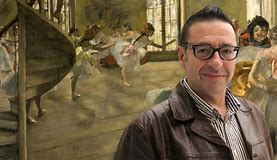
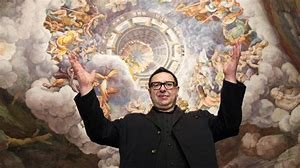 8) If it’s Art you wish to explore, meet Waldemar Januszczak who has been twice honoured as Critic of the year in the U.K. and here presents not one but six different series. The joy of each one is that, over and over, the viewer, through the host’s physically energetic, thoroughly informed, and compellingly passionate accounts, gains fresh and exciting insights into masterpieces and eras that are too often spoken of in academic monotones and drained of their immediacy. With Waldemar, however, you have to walk fast to keep up with him as, at many a turn, you’ll find yourself saying “I didn’t know that” or, better, “I didn’t feel that before now.” You can “Explore the secrets behind some of the world’s most famous paintings” in EVERY PICRURE TELLS A STORY,” reconsider what you thought you knew with THE IMPRESSIONISTS, get “THE FULL STORY” with “GAUGIN” (this one turned my attitudes around, always a good thing). You can also do the fascinating comparison of WALTER SICKERT VS JOHN SINGER SARGENT, “find beauty and refinement where one might have expected only brutality and destruction” in THE DARK AGES: AN AGE OF LIGHT, and try UNDERSTANDING ART: BAROQUE AND ROCOCO as you whirlpool with your guide when, as usual, he implants his examples and ideas in your psyche and knows you will change with them.
8) If it’s Art you wish to explore, meet Waldemar Januszczak who has been twice honoured as Critic of the year in the U.K. and here presents not one but six different series. The joy of each one is that, over and over, the viewer, through the host’s physically energetic, thoroughly informed, and compellingly passionate accounts, gains fresh and exciting insights into masterpieces and eras that are too often spoken of in academic monotones and drained of their immediacy. With Waldemar, however, you have to walk fast to keep up with him as, at many a turn, you’ll find yourself saying “I didn’t know that” or, better, “I didn’t feel that before now.” You can “Explore the secrets behind some of the world’s most famous paintings” in EVERY PICRURE TELLS A STORY,” reconsider what you thought you knew with THE IMPRESSIONISTS, get “THE FULL STORY” with “GAUGIN” (this one turned my attitudes around, always a good thing). You can also do the fascinating comparison of WALTER SICKERT VS JOHN SINGER SARGENT, “find beauty and refinement where one might have expected only brutality and destruction” in THE DARK AGES: AN AGE OF LIGHT, and try UNDERSTANDING ART: BAROQUE AND ROCOCO as you whirlpool with your guide when, as usual, he implants his examples and ideas in your psyche and knows you will change with them.
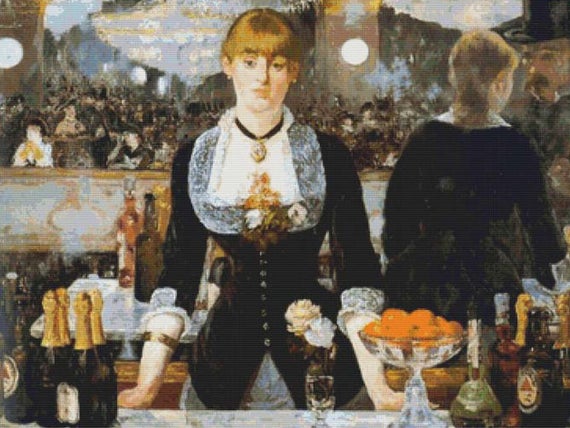 9) In GREAT ARTISTS host Tim Marlow offers many of the same benefits as our friend above but, rather than Januszczak’s “life is short, I’m a bit overweight, I have to live it all” manner, Marlow’s is peacefully engaging, sharply insightful, firmly but quietly enthusiastic, easy in style, and accessible in language as he sets up space for our profound experience and unforced reflection. We go on GREAT ARTISTS from Giotto, Leonardo, Durer, Michelangelo, Titian and Bruegel, on disc one, to El Greco, Rubens, Velazquez, Rembrandt, Vermeer, Turner and Van Gogh on disc two. The series is shot on location “in over fifty museums, churches, and palaces throughout Europe and the United State. Marlow’s other gem of a set, THE COURTAULD, explores the renowned collection of “one of the finest small museums in the world.” We see Manet’s A Bar at the Folies-Bergère, Van Gogh’s Self Portrait with Bandaged Ear, plus much else unknown or not as well known, plus a “look behind the scenes at The Courtauld’s conservation department. I love this gallery and am grateful for Marlow’s tour of it. Memorable experience here. You get to live inside paintings with your guide.
9) In GREAT ARTISTS host Tim Marlow offers many of the same benefits as our friend above but, rather than Januszczak’s “life is short, I’m a bit overweight, I have to live it all” manner, Marlow’s is peacefully engaging, sharply insightful, firmly but quietly enthusiastic, easy in style, and accessible in language as he sets up space for our profound experience and unforced reflection. We go on GREAT ARTISTS from Giotto, Leonardo, Durer, Michelangelo, Titian and Bruegel, on disc one, to El Greco, Rubens, Velazquez, Rembrandt, Vermeer, Turner and Van Gogh on disc two. The series is shot on location “in over fifty museums, churches, and palaces throughout Europe and the United State. Marlow’s other gem of a set, THE COURTAULD, explores the renowned collection of “one of the finest small museums in the world.” We see Manet’s A Bar at the Folies-Bergère, Van Gogh’s Self Portrait with Bandaged Ear, plus much else unknown or not as well known, plus a “look behind the scenes at The Courtauld’s conservation department. I love this gallery and am grateful for Marlow’s tour of it. Memorable experience here. You get to live inside paintings with your guide.
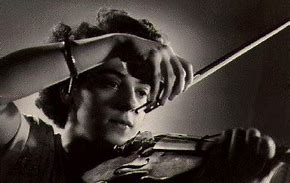
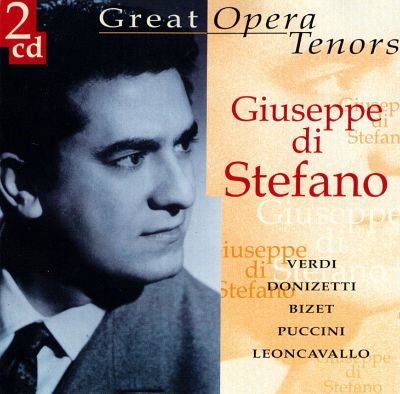 10) THE ART OF CONDUCTING: GREAT CONDUCTORS OF THE PAST and The ART OF CONDUCTING: LEGENDARY CONDUCTORS OF A GOLDEN ERA include, in the former, samplings of Barbirolli, Busch, Furtwangler, Karajan, Klemperer, Weingartner, Walter, Toscanini, Beecham, Reiner, Szell, Richard Strauss, even Nikisch, while the later offers, for example, Mravinsky, Erich Kleiber, Munch, Scherchen, Celibidache, Mengelberg, and Furtwangler again. Generous samples of film footage may be of rehearsal or live performance, and commentaries feature so many, like Menuhin, John Eliot Gardner, Stokowski, Isaac Stern, Karajan, Barenboim, and Schwartzkopf. These are masters speaking of their personal experience of masters and one doesn’t get a much better musical education anywhere. Next, we have THE ART OF VIOLIN: THE DEVIL’S INSTRUMENT TRANSCENDING THE VIOLIN with a mind-blowing roster that includes in part Enescu, Neveu, Grumiaux, Heifetz, Kreisler, Menuhin, Milstein, Oistrakh, Stern, Ricci, and Milstein, with constant opportunity for comparison, pleasure, revelation, and thrills. On THE ART OF THE PIANO: GREAT PIANISTS OF THE 20TH CENTURY, the usual suspects have been rounded up and they include, in performance, Arrau, Cortot, Edwin Fischer, Gilels, Gould, Hess, Hofmann, Horowitz, Rubinstein, Richter, and Rachmaninoff. Included are commentaries by Kovacevich, Kissin, Barenboim, and Sir Colin Davis, to name but a few. Finally, on THE ART OF SINGING: GOLDEN VOICES OF THE CENTURY offers yet another irreplaceable goldmine of unforgettable vocal brilliance from Caruso to Callas and much other greatness in between. Included are Martinelli, Gigli, Schipa, Ponselle, Tauber, Chaliapin, Flagsted, Melchior, Tebaldi, Bjorling, Sutherland, Christoff, Vickers, and, wait, I must not leave out a favorite, di Stefano. Memorable is the going word on this set, as it is on all the others, and I cannot recommend each title enough.
10) THE ART OF CONDUCTING: GREAT CONDUCTORS OF THE PAST and The ART OF CONDUCTING: LEGENDARY CONDUCTORS OF A GOLDEN ERA include, in the former, samplings of Barbirolli, Busch, Furtwangler, Karajan, Klemperer, Weingartner, Walter, Toscanini, Beecham, Reiner, Szell, Richard Strauss, even Nikisch, while the later offers, for example, Mravinsky, Erich Kleiber, Munch, Scherchen, Celibidache, Mengelberg, and Furtwangler again. Generous samples of film footage may be of rehearsal or live performance, and commentaries feature so many, like Menuhin, John Eliot Gardner, Stokowski, Isaac Stern, Karajan, Barenboim, and Schwartzkopf. These are masters speaking of their personal experience of masters and one doesn’t get a much better musical education anywhere. Next, we have THE ART OF VIOLIN: THE DEVIL’S INSTRUMENT TRANSCENDING THE VIOLIN with a mind-blowing roster that includes in part Enescu, Neveu, Grumiaux, Heifetz, Kreisler, Menuhin, Milstein, Oistrakh, Stern, Ricci, and Milstein, with constant opportunity for comparison, pleasure, revelation, and thrills. On THE ART OF THE PIANO: GREAT PIANISTS OF THE 20TH CENTURY, the usual suspects have been rounded up and they include, in performance, Arrau, Cortot, Edwin Fischer, Gilels, Gould, Hess, Hofmann, Horowitz, Rubinstein, Richter, and Rachmaninoff. Included are commentaries by Kovacevich, Kissin, Barenboim, and Sir Colin Davis, to name but a few. Finally, on THE ART OF SINGING: GOLDEN VOICES OF THE CENTURY offers yet another irreplaceable goldmine of unforgettable vocal brilliance from Caruso to Callas and much other greatness in between. Included are Martinelli, Gigli, Schipa, Ponselle, Tauber, Chaliapin, Flagsted, Melchior, Tebaldi, Bjorling, Sutherland, Christoff, Vickers, and, wait, I must not leave out a favorite, di Stefano. Memorable is the going word on this set, as it is on all the others, and I cannot recommend each title enough.

